Argon NEO: Honest Review After 1 Month Usage
There are many cases available for Raspberry Pi, and it’s not always easy to understand the differences between them, and which one you should get.
Today, I’m sharing with you my feedback about the Argon NEO. I’ve been using it for a month now, so I can give you a detailed overview.
The Argon NEO is an aluminum case for the Raspberry Pi 4, designed for passive cooling. There are neat features built-in, like a sliding top and direct access to the GPIO pins and camera port.
I’ll give you a general overview about this product first, before getting into more details of the tests I have done. Finally, I will give you my recommendation, comparing it to other cases I have tested.
Argon NEO Overview
Let’s start by giving you more details about this case.
Conception
As I told you in the introduction, the Argon NEO is an aluminum case for Raspberry Pi. At first glance, it looks similar to the Flirc Case I reviewed a few weeks ago.
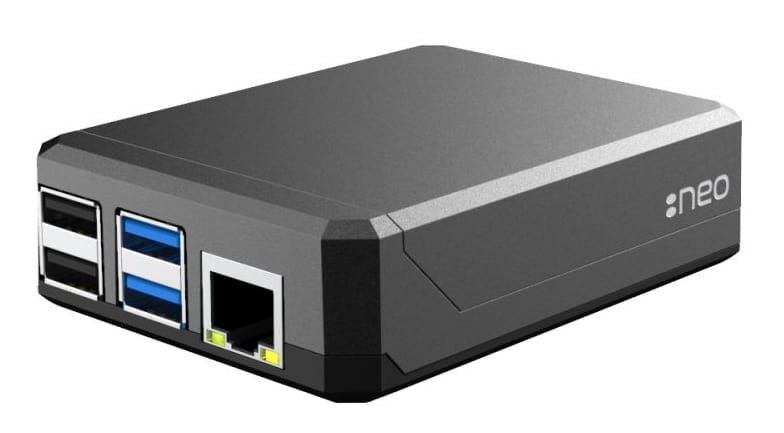
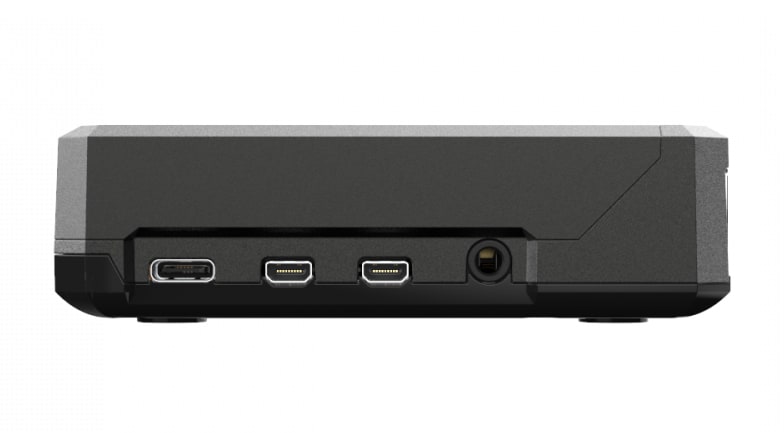
If you look closer, you can see a slit on the side. It’s a sliding lid on top!
Why? Because it allows you to easily access the ports on the board (GPIO, camera, display).
This is nice because with too many cases, it’s just impossible to access them without unscrewing it.
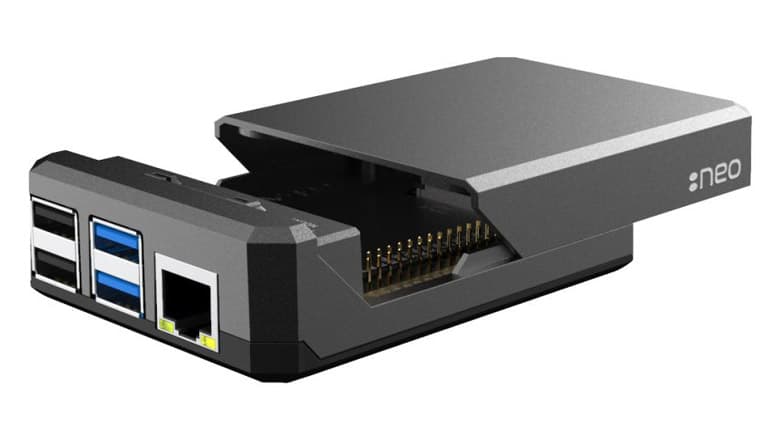
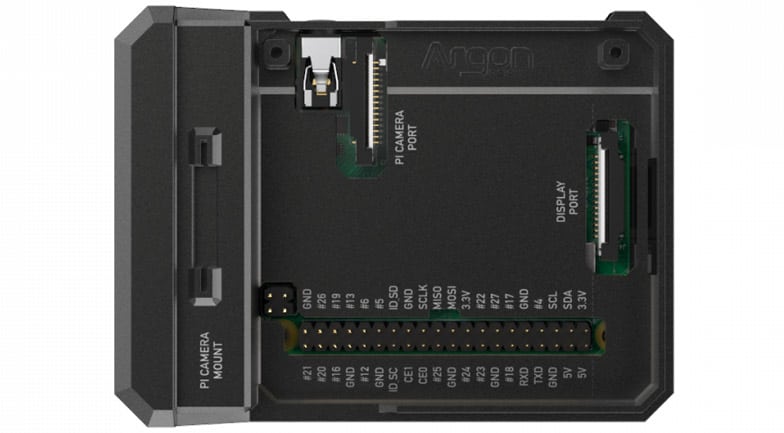
There are two magnets that keep the case safely closed. It shouldn’t slide when you touch or transport it.
Join Our Community!
Connect, learn, and grow with other Raspberry Pi enthusiasts. Support RaspberryTips and enjoy an ad-free reading experience. Get exclusive monthly video tutorials and many other benefits.
Learn moreAside from that, the case is typical for this type of product. It’s looks good, seems robust enough and easy to mount (more details later).
It's a free PDF guide containing every Raspberry Pi Linux command you should know!
Download now
Price
The Argon NEO case is pretty cheap compared to other case in the same category. You can find it on Amazon around $15 during writing. Once again, it’s in the same price range as the Flirc Case, which seems to be its direct competitor.
| Raspberry Pi Case | Average pricing |
|---|---|
| Argon One | $25 |
| Flirc Case | $16 |
| Argon NEO | $15 |
| Official Case | $10 |
I ordered mine on their website to test it. The service was good, but the delivery took a long time (3 weeks approximately). So, unless you are in Asia, it’s probably better to order it on Amazon.
Cooling theory
As the other aluminum case competitors, the Argon NEO is a giant heat sink.
Some thermal pad is included to put on your CPU and RAM. Then the aluminum part that you install over the Raspberry Pi will do its job.
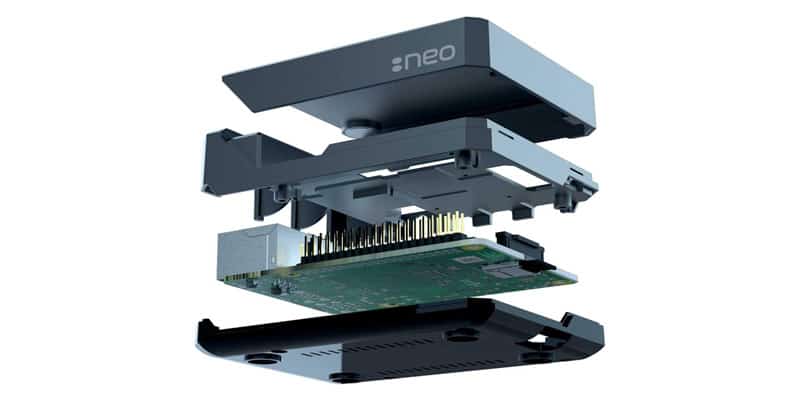
We’ll see the results later, but there is nothing new on the paper.
Other information
I think there are several versions available, or maybe it has been updated over time. Anyway, I saw slightly different pictures and colors on different websites. Even on Amazon, there are different colors in the pictures.
I have tested the gray one, and on some websites there is a dark blue one. The GPIO pins indication are also a bit different from mine.
I haven’t seen any major difference, but make sure to check the detail before buying it.
Argon NEO Review
Unboxing
The Argon NEO is delivered in a small package, almost the size of the case.
You’ll find everything you need inside it:
- The case (obviously)
- The thermal pad
- 6 screws (you only need 4, so 2 bonus ones in my package)
- an instruction manual
- 4 rubber footings to stabilize the case on your desk
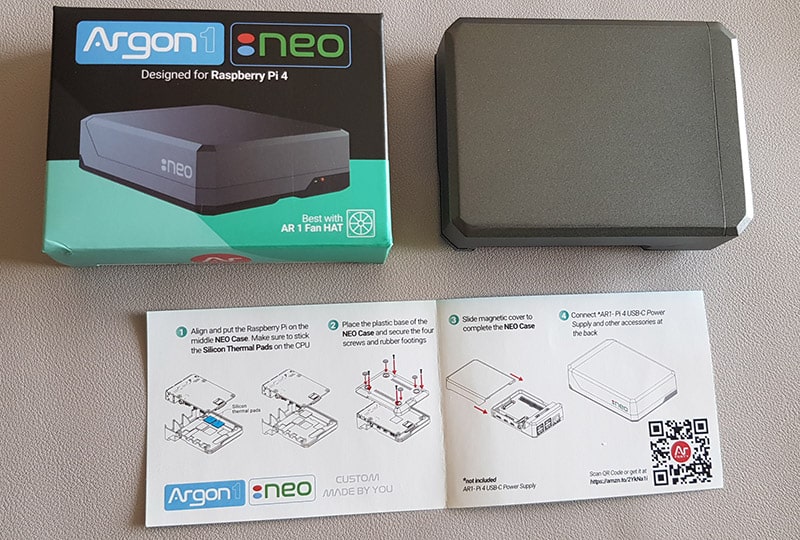
I don’t have the fan in my case, you can buy it separately if you want to try it. As you’ll see in the next parts, it’s probably not necessary except for extreme usage.
Overall Design
Ok, the design of a case is a personal opinion, but I like it. I may prefer the aluminum and black from the Flirc case, but it’s way better that most of my other cases. Aside from the look, great things come from the features of the Argon NEO.
Firstly, I really like the magnetic top that you can remove easily to access the GPIO pins, for example. And it’s not only accessing it like my basic passive case, they have written the pins numbers on the case, so it’s really convenient to use:
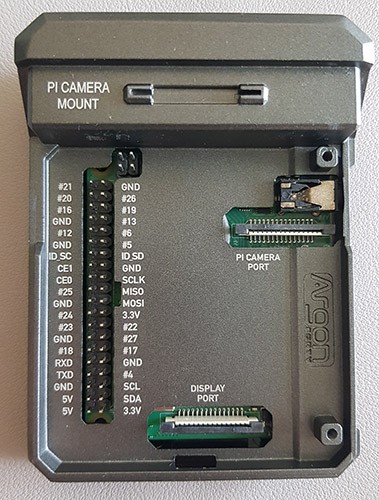
There is no problem to plug a HAT there. You can even close the case with the HAT inside for some of them:
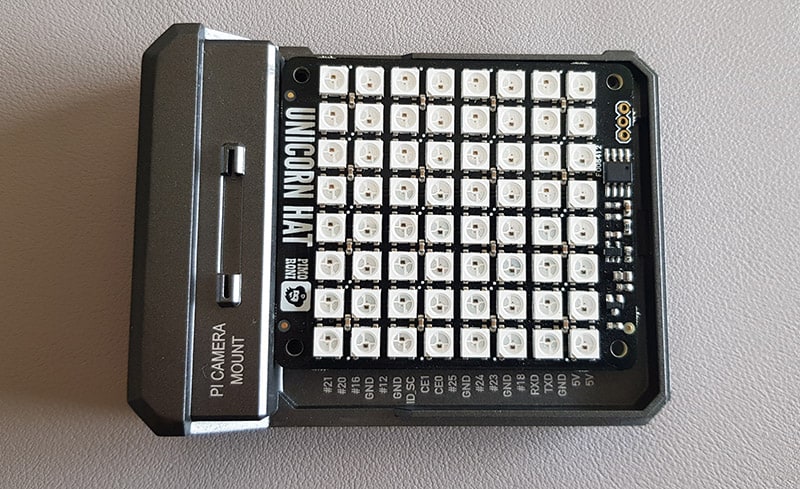
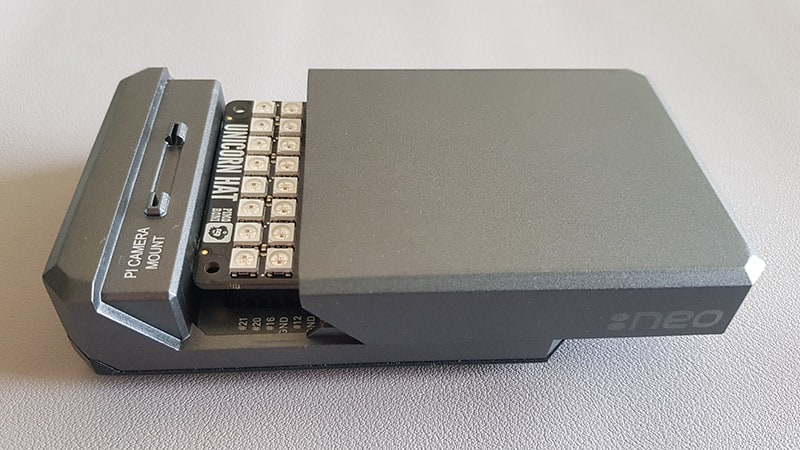
I’m less convinced by the camera support on top. It’s a good idea, if you don’t have a holder for your camera. But, it’s really complicated to give it the correct orientation and I was expecting something better.
It works only for the official camera module, it doesn’t hold it very well and the ribbon could have been better managed:
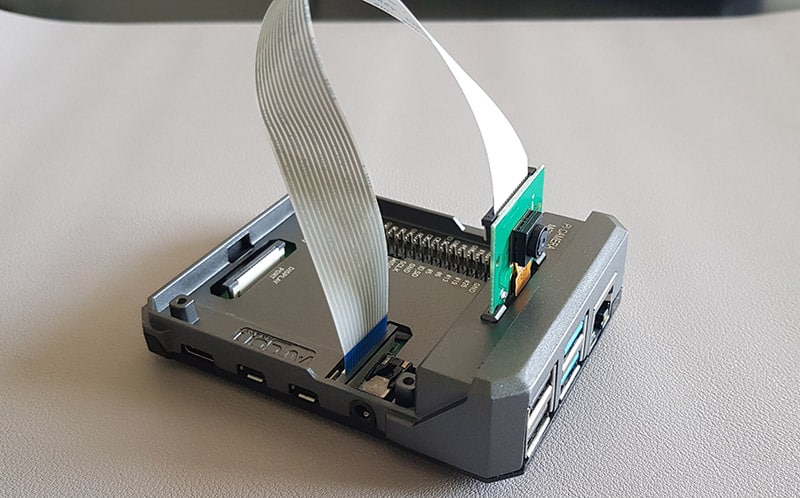
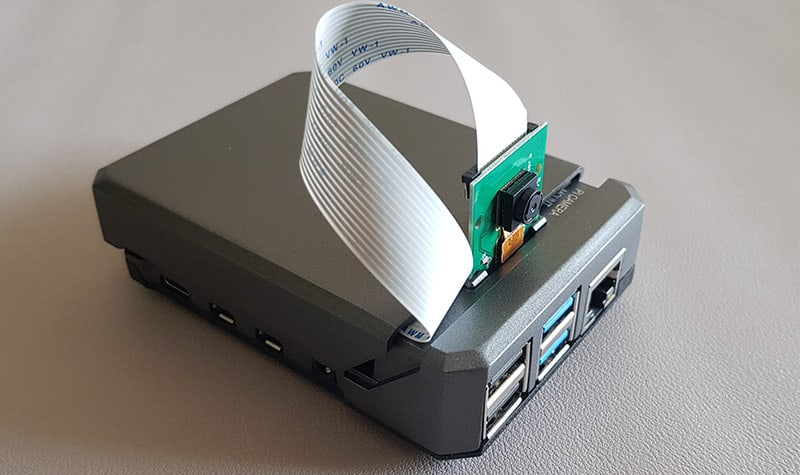
I will probably continue to use my holder anyway, but know that it’s working if you have nothing else, just don’t expect too much from it.
It's a free PDF guide containing every Raspberry Pi Linux command you should know!
Download now
Last good point to complete this part: it’s an aluminum case, and we can still monitor the LED of the Raspberry Pi:
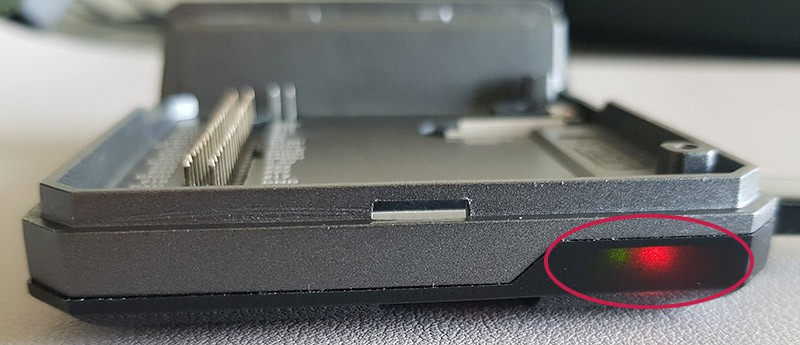
It’s another thing that is missing on the Flirc Case for example. Also, while I’m comparing both, the SD card slot is really easier to use (you don’t have to return the case to insert the SD card ^^).
Cooling Results
As usual on this website, I tested the cooling system during a 2-minute stress test. As you can see on the results, the aluminum case does its job really well:
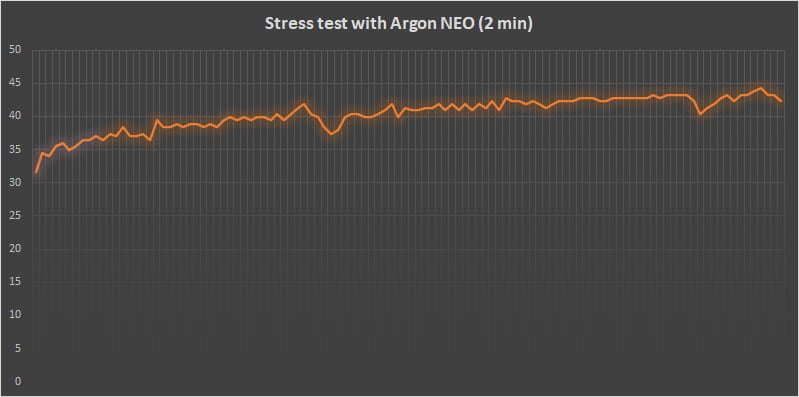
It didn’t exceed 45 °C with a 100% CPU load for 2 minutes.
I also made a test for 15min to see how it compares. The temperature never goes over 58 °C during a 100% CPU load on the 4 cores for 15min:
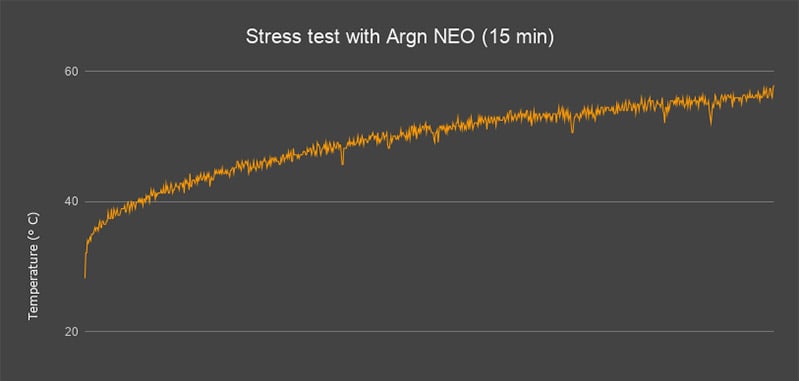
It seems pretty safe for a normal usage, even without a fan.
As a reminder, the Raspberry Pi OS will start to slow down over 85 °C, not before. So, you have a decent margin, even if you need a 100% CPU load from time-to-time.
The case doesn’t seem to overheat (for a standard usage at least). Even at the end of my test, you can touch the without any problem.
My infrared thermometer told me 36.5 °C on the top (98 °F). I don’t know how accurate it is, but shouldn’t be far off.
As I don’t have the fan, I can’t compare both solutions. But from what I have seen it doesn’t seem useful, except maybe for extreme usage. Also, I’m not even sure how effective a fan will be, as there is the aluminum heat sink between the fan and the CPU, and no holes on top to extract the air (except if you let the top opened).
Let me know in the community if you have tested it.
Wi-Fi Signal
When using an aluminum case, it’s always a worry if you need to use the Wi-Fi connection on your Raspberry Pi. I rarely use it, but I tested it for you to see how it works.
During my latest test with the Flirc Case for example, I noticed a high drop in Wi-Fi signal and Internet speed. So, I’m curious to see how it goes with the Argon NEO.
First, let’s do a check with wavemon:
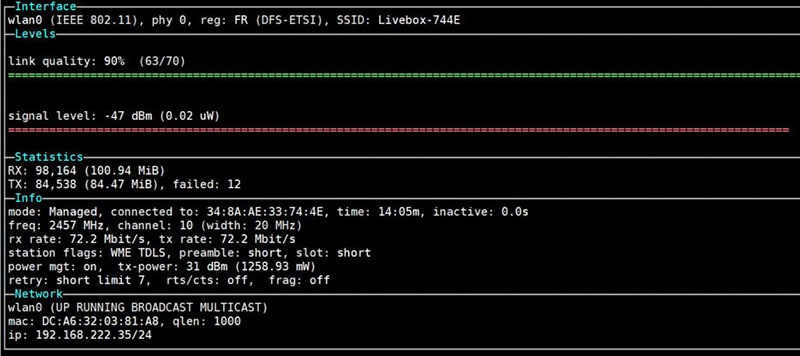
Link quality, signal level and rx/tx rates are excellent. In fact, I have similar values without any case. So, it doesn’t seem to be an issue for this case.
Let’s run SpeedTest to be sure :

Same thing here, 50Mbps in Wi-Fi is pretty good for my connection and Wi-Fi network.
In short nothing to worry about. If you need a Wi-Fi connection, and you hesitate between the Flirc Case and Argon NEO, think no more: get the Argon case 🙂.
It's a free PDF guide containing every Raspberry Pi Linux command you should know!
Download now
In a Nutshell
Before finishing this review, here are in short my thoughts about this Argon NEO case.
Pros & cons
| Pros | Cons |
|---|---|
| The magnetic slide top is brilliant. | The camera mount works only for the official camera, and it could be more stable. |
| Easy access to GPIO pins, camera and display port. | I received a rectangle thermal pad instead of two squares. Not sure what to do with it (I had cut it). |
| Efficient enough to cool your Raspberry Pi 4. | I have doubts about the fan version (but I have not tested). |
| Just enough space to put a HAT inside the case. | |
| A camera mount on top is a great idea. |
Is It For You?
Overall, I really like this case and I don’t really see who it isn’t for.
Whether you’ll use it for desktop usage, mini-server or to use the GPIO pins, it will be perfect.
This case might not be for those with extreme usage. For example, if you want to mine crypto all day long with your Raspberry Pi. Firstly, good luck. Secondly, you’ll probably need a better cooling system. As for any passive solution, it probably can’t keep your CPU under 80 °C for 24h at 100%.
Still unsure?
If you are not yet convinced that the Argon NEO is the best option for you, you can read this other article I wrote on RaspberryTips: I tested all the most popular Raspberry Pi cases and compare them. You should have a better overview of the possibilities after that.
It's a free PDF guide containing every Raspberry Pi Linux command you should know!
Download now
Want to chat with other Raspberry Pi enthusiasts? Join the community, share your current projects and ask for help directly in the forums.
Other Solutions
If you are not convinced by this model, or want to check alternatives before, here are a few options for you:
- I often compared the Argon NEO to the Flirc Case, so you can check the Flirc Case Review here if you want more details.
- If the passive cooling system is not enough for you, the only solution I have for the moment is to switch to the ICE Tower. I reviewed it here, but I don’t know if there is a case for it.
- Also, if you have more budget and plan to use a SSD all the time with your Pi, another model to consider from the same brand is the Argon ONE. There is a space to put a M2 SSD in the case, that’s the end of your external drive :). I also tested it in this article.
If you have anything to add to this review, any questions, or a request for another review, let me know in the community. I will do my best to help you.
Whenever you’re ready, here are other ways I can help you:
The RaspberryTips Community: If you want to hang out with me and other Raspberry Pi fans, you can join the community. I share exclusive tutorials and behind-the-scenes content there. Premium members can also visit the website without ads.
Master your Raspberry Pi in 30 days: If you are looking for the best tips to become an expert on Raspberry Pi, this book is for you. Learn useful Linux skills and practice multiple projects with step-by-step guides.
The Raspberry Pi Bootcamp: Understand everything about the Raspberry Pi, stop searching for help all the time, and finally enjoy completing your projects.
Master Python on Raspberry Pi: Create, understand, and improve any Python script for your Raspberry Pi. Learn the essentials step-by-step without losing time understanding useless concepts.
You can also find all my recommendations for tools and hardware on this page.

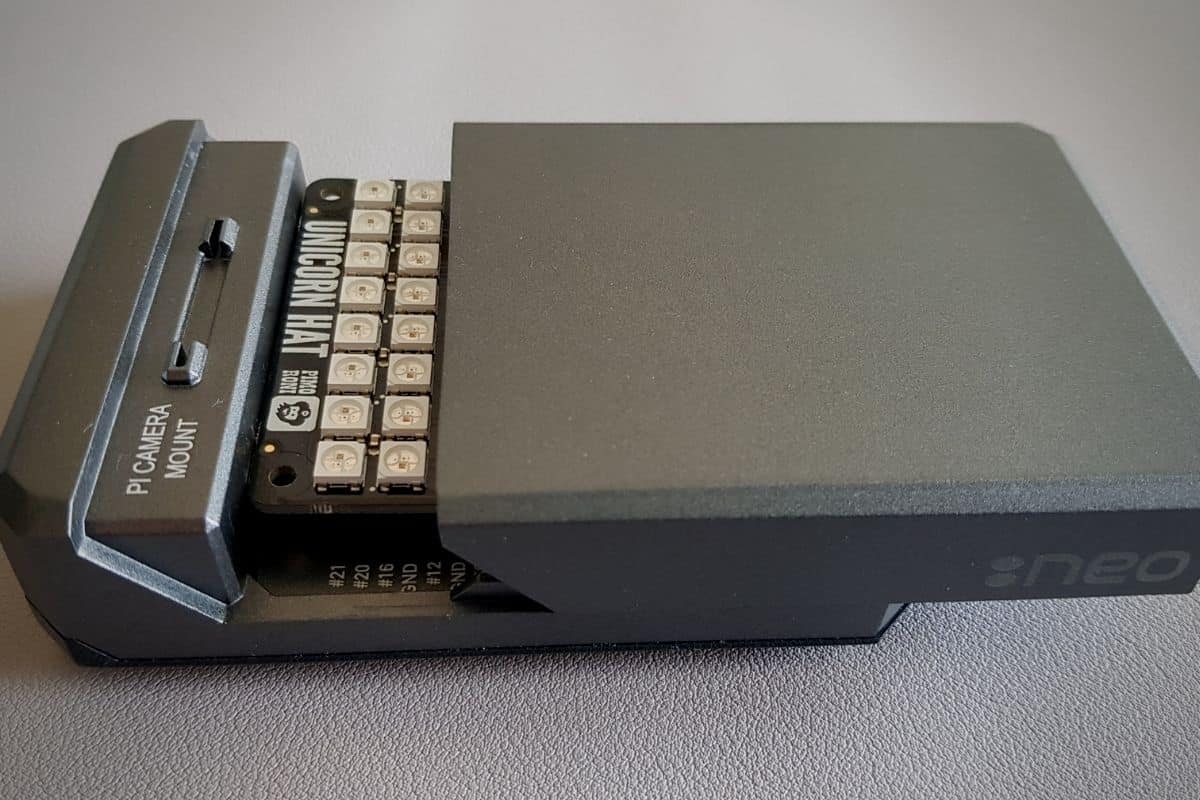


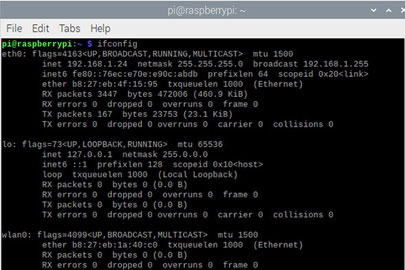
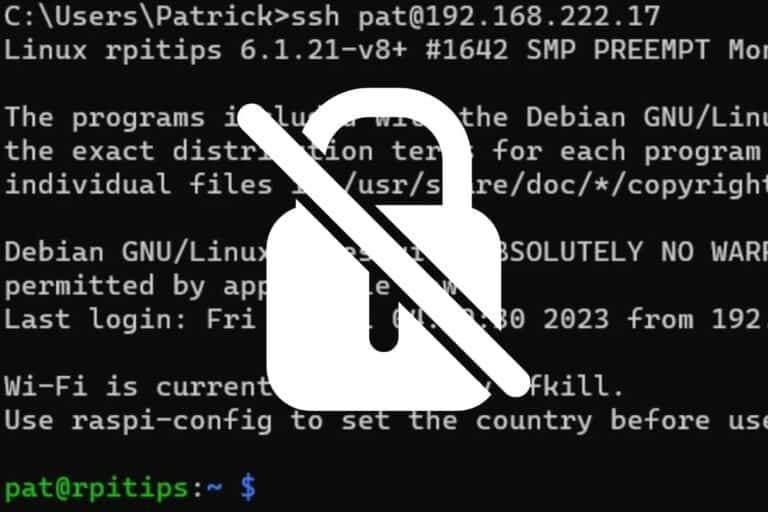
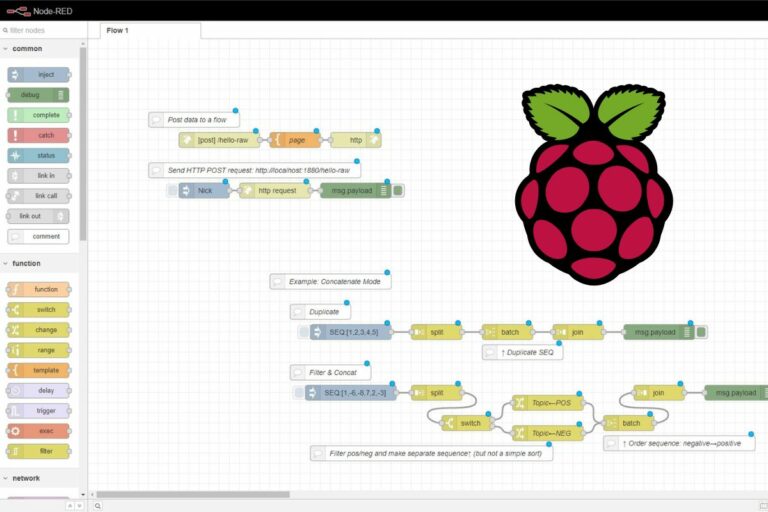


Hi Patrick, I really appreciate this review, it’s very thorough compared to the ones I usually see. Thanks man! With respect to the HAT, do you have an idea how high the HAT can be high for the lid to still fit on? I have a PiJuice battery that I would like to squeeze in, it’s quite slim, it would be nice if I could fit it in this case.
Hi Tom,
Thanks for your comment.
I think 10mm is fine, maybe 12-15 but not much.
Thanks Patrick, that is probably not enough. My PiJuice is around 15mm, depending on how you measure.